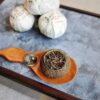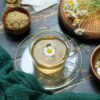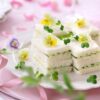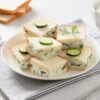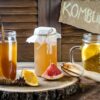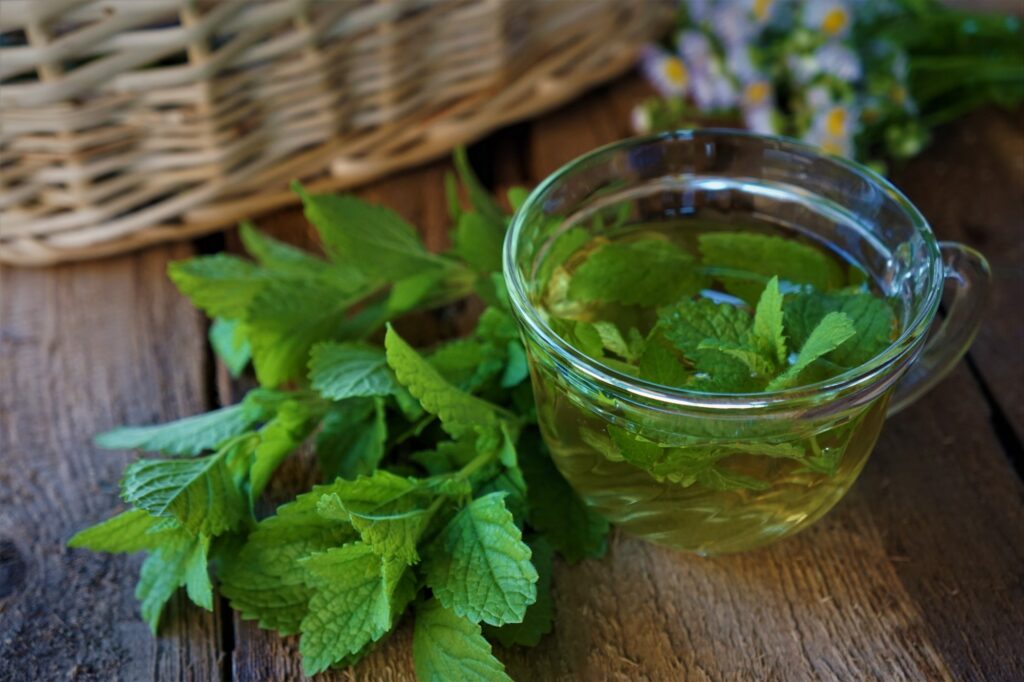
Lemon balm, a fragrant herb from the mint family, has been cherished for centuries for its soothing aroma and refreshing flavor. Brewing a cup of lemon balm tea from fresh leaves is a delightful way to savor the herb’s unique essence. This guide will take you on a journey through the art of crafting a revitalizing lemon balm tea, unlocking its numerous benefits and exploring the versatility of this delightful beverage.
Lemon balm tea has a long-standing tradition in herbal medicine, prized for its calming properties and ability to promote relaxation. Its bright, lemony taste, with hints of mint, makes it a delightful addition to any tea lover’s repertoire. Whether you’re seeking a moment of tranquility or simply craving a refreshing beverage, lemon balm tea from fresh leaves promises a truly rejuvenating experience.
Health benefits of lemon balm tea
Lemon balm tea is a treasure trove of natural goodness, offering a range of potential health benefits that make it a worthy addition to your daily routine. Here are some of the notable advantages associated with this invigorating brew:
- Promotes Relaxation: Lemon balm is renowned for its calming effects, helping to alleviate stress and anxiety. The herb contains compounds like rosmarinic acid and terpenes, which may contribute to its soothing properties.
- Supports Digestive Health: The mild, carminative properties of lemon balm tea can aid in relieving digestive discomfort, such as bloating and indigestion, promoting overall gut health.
- Enhances Sleep Quality: The calming effects of lemon balm may help improve sleep quality, making it an excellent choice for a relaxing evening beverage.
- Antioxidant Properties: Lemon balm is rich in antioxidants, including phenolic compounds and flavonoids, which can help protect the body against oxidative stress and potential cellular damage.
- Promotes Respiratory Health: Some studies suggest that lemon balm may have a soothing effect on respiratory conditions, potentially alleviating symptoms of colds and flu.
How to choose and harvest fresh lemon balm leaves
To fully appreciate the essence of lemon balm tea, it’s essential to start with fresh, high-quality leaves. Here are some tips for choosing and harvesting the perfect lemon balm leaves:
- Identify the Plant: Lemon balm (Melissa officinalis) is a perennial herb with bright green, slightly wrinkled leaves and a distinct lemon aroma. It typically grows to a height of 2-3 feet and produces small, white or pale yellow flowers.
- Harvest at the Right Time: The best time to harvest lemon balm leaves is in the morning, after the dew has evaporated but before the heat of the day sets in. This ensures that the leaves are at their peak flavor and aroma.
- Select Healthy Leaves: Choose leaves that are vibrant green, free from blemishes or discoloration, and have a strong lemon scent. Avoid leaves that appear wilted or damaged.
- Harvest Responsibly: When harvesting lemon balm leaves, use clean, sharp scissors or pruning shears to snip the stems just above a leaf node. This encourages new growth and ensures a continuous supply of fresh leaves.
- Handle with Care: Gently place the harvested leaves in a clean basket or container, being careful not to crush or bruise them, as this can affect their flavor and aroma.
Preparing fresh lemon balm leaves for tea
Once you’ve harvested your fresh lemon balm leaves, it’s time to prepare them for brewing a delightful cup of tea. Follow these simple steps:
- Rinse the Leaves: Gently rinse the lemon balm leaves under cool, running water to remove any dirt, dust, or debris. Shake off excess moisture and pat them dry with a clean towel or paper towel.
- Remove Stems: Carefully remove any thick stems from the leaves, as they can impart a bitter flavor to the tea. Tender stems can be left intact.
- Tear or Chop: For optimal flavor extraction, lightly tear or chop the lemon balm leaves into smaller pieces. This increases the surface area exposed to the hot water, allowing for better infusion.
- Measure the Leaves: As a general guideline, use approximately 1-2 teaspoons of fresh lemon balm leaves per cup of water. Adjust the amount according to your personal taste preferences.
- Prepare for Brewing: Once prepared, the fresh lemon balm leaves are ready to be used for brewing a delightful cup of tea. Proceed to the next step to learn how to make lemon balm tea using these fresh leaves.
Making lemon balm tea using fresh leaves
With your fresh lemon balm leaves prepared, it’s time to embark on the process of brewing a rejuvenating cup of lemon balm tea. Follow these simple steps:
- Heat the Water: Bring fresh, cold water to a gentle boil in a kettle or saucepan. Avoid over-boiling, as this can cause the water to become flat and affect the flavor of the tea.
- Prepare the Infusion: Place the prepared lemon balm leaves in a teapot, infuser, or heat-resistant container. For optimal flavor, use a glass or ceramic vessel to avoid any metallic tastes.
- Pour the Water: Once the water reaches a gentle boil, carefully pour it over the lemon balm leaves, ensuring they are fully submerged. Allow the leaves to steep for 5-7 minutes, adjusting the steeping time according to your desired strength.
- Strain the Tea: After the recommended steeping time, use a fine-mesh strainer or the infuser’s built-in strainer to separate the leaves from the infusion. This step ensures a clear, smooth tea without any leaf particles.
- Enjoy Your Lemon Balm Tea: Pour the freshly brewed lemon balm tea into your favorite cup or mug and savor its refreshing aroma and flavor. You can enjoy it hot or allow it to cool slightly for a more delicate taste.
Remember, the longer you steep the lemon balm leaves, the stronger the flavor will be. Adjust the steeping time to your personal preference, and experiment to find your perfect cup of lemon balm tea.
Lemon balm tea variations and additions
While lemon balm tea is delightful on its own, you can also explore various variations and additions to enhance its flavor profile and create a truly personalized beverage. Here are some ideas to inspire your creativity:
- Honey or Sweeteners: A touch of honey, maple syrup, or your preferred natural sweetener can complement the subtle lemon flavor and add a delightful sweetness to your lemon balm tea.
- Fresh Lemon or Lime: Squeeze a few drops of fresh lemon or lime juice into your tea for an extra burst of citrusy goodness.
- Mint Leaves: Combine fresh lemon balm leaves with a few sprigs of mint for a refreshing, herbal twist.
- Fruit Infusions: Experiment with adding slices of fresh fruits like strawberries, peaches, or raspberries to your lemon balm tea for a fruity and vibrant flavor.
- Spices: Introduce warm spices like cinnamon, ginger, or cardamom to your lemon balm tea for a cozy, aromatic experience.
- Iced Lemon Balm Tea: For a refreshing summer treat, brew a strong batch of lemon balm tea, allow it to cool, and serve it over ice with a slice of lemon or lime.
- Lemon Balm Tea Lattes: Combine lemon balm tea with steamed or frothed milk (dairy or plant-based) for a creamy, indulgent latte experience.
Feel free to experiment and let your creativity shine, combining lemon balm tea with your favorite flavors and ingredients to create a truly personalized beverage.
Storing and preserving lemon balm leaves for tea
While fresh lemon balm leaves offer the most vibrant flavor and aroma, you can also preserve them for future use, ensuring a steady supply of this delightful herb for your tea-making adventures. Here are some tips for storing and preserving lemon balm leaves:
- Air-Drying: One of the most common methods of preserving lemon balm leaves is air-drying. Tie the stems together and hang them upside down in a warm, well-ventilated area away from direct sunlight. Once the leaves are completely dry and crisp, remove them from the stems and store them in an airtight container, away from moisture and light.
- Freezing: Fresh lemon balm leaves can also be frozen for long-term storage. Gently rinse the leaves and pat them dry, then spread them on a baking sheet and place them in the freezer. Once frozen, transfer the leaves to an airtight container or freezer bag, removing as much air as possible to prevent freezer burn.
- Dehydrating: Use a food dehydrator or your oven’s lowest setting to dehydrate the lemon balm leaves. Arrange the leaves in a single layer and dehydrate until they are completely dry and crisp. Store the dehydrated leaves in an airtight container, away from moisture and light.
- Infused Oils or Vinegars: Infuse fresh lemon balm leaves in olive oil or vinegar to capture their flavor and aroma. These infused oils and vinegars can be used in cooking or as salad dressings, adding a delightful lemon balm twist to your dishes.
Properly stored, dried or frozen lemon balm leaves can retain their flavor and aroma for several months, allowing you to enjoy the benefits of this refreshing herb throughout the year.
Lemon balm tea recipes for different occasions
Lemon balm tea is a versatile beverage that can be enjoyed in various forms and on different occasions. Here are some delightful lemon balm tea recipes to inspire your tea-making adventures:
- Lemon Balm Iced Tea: Brew a strong batch of lemon balm tea, allow it to cool, and serve it over ice with a slice of lemon or lime and a sprig of fresh mint for a refreshing summer treat.
- Lemon Balm and Honey Tea: Combine fresh lemon balm leaves with a touch of honey for a soothing and naturally sweet beverage, perfect for a cozy evening or when you need a comforting pick-me-up.
- Lemon Balm and Ginger Tea: Infuse fresh ginger slices with lemon balm leaves for a zesty and invigorating tea that can aid in digestion and provide a natural energy boost.
- Lemon Balm and Lavender Tea: Blend lemon balm leaves with dried lavender buds for a calming and aromatic tea that can promote relaxation and a good night’s sleep.
- Lemon Balm and Chamomile Tea: Combine the soothing properties of lemon balm with the gentle flavors of chamomile for a calming and restorative herbal blend.
- Lemon Balm and Hibiscus Tea: Infuse lemon balm leaves with vibrant hibiscus flowers for a tangy and visually stunning tea that is rich in antioxidants.
- Lemon Balm and Berry Tea: Incorporate fresh or frozen berries, such as strawberries or raspberries, into your lemon balm tea for a fruity and refreshing twist.
These recipes are just the beginningContinued:
Lemon balm tea and its culinary uses
While lemon balm tea is a delightful beverage on its own, the versatile herb can also be incorporated into a variety of culinary applications, adding a refreshing and aromatic touch to both sweet and savory dishes.
- Lemon Balm Pesto: Blend fresh lemon balm leaves with olive oil, garlic, pine nuts, and Parmesan cheese for a vibrant pesto that can be used as a spread, pasta sauce, or marinade.
- Lemon Balm Vinaigrette: Create a tangy and fragrant salad dressing by infusing lemon balm leaves into a vinegar, such as white wine or apple cider vinegar, and combining it with olive oil, Dijon mustard, and a touch of honey.
- Lemon Balm Infused Oils and Vinegars: Steep fresh lemon balm leaves in olive oil or vinegar to create flavorful infusions that can be used in cooking, baking, or as a finishing touch for various dishes.
- Lemon Balm Baked Goods: Incorporate dried or fresh lemon balm leaves into baked goods like breads, scones, or shortbread cookies for a delightful lemony twist.
- Lemon Balm Syrups and Jams: Simmer lemon balm leaves with sugar and water to create a versatile syrup that can be used to sweeten beverages, drizzle over desserts, or even as a base for homemade lemon balm soda.
- Lemon Balm Compound Butter: Mix chopped fresh lemon balm leaves into softened butter for a flavorful compound butter that can be used to top grilled meats, vegetables, or even toast.
- Lemon Balm Garnishes: Use fresh lemon balm leaves as a beautiful and aromatic garnish for a variety of dishes, from salads and soups to cocktails and desserts.
Exploring the culinary uses of lemon balm can unlock a world of flavor and creativity in the kitchen, allowing you to incorporate the herb’s refreshing essence into both sweet and savory creations.
Enjoying the refreshing and soothing benefits of lemon balm tea
Lemon balm tea, crafted from the fresh leaves of this fragrant herb, offers a delightful and versatile beverage that can be enjoyed throughout the year. From its calming and digestive-supportive properties to its bright, citrusy flavor, lemon balm tea is a true delight for the senses.
Whether you’re seeking a moment of tranquility, a refreshing pick-me-up, or a soothing nightcap, lemon balm tea can be tailored to suit your individual preferences and needs. Experiment with various additions, infusions, and recipes to discover your perfect cup of this rejuvenating herbal elixir.
As you continue your journey with lemon balm tea, remember to savor each sip, allowing the herb’s aroma and flavor to transport you to a place of serenity and balance. Embrace the natural goodness of this remarkable plant and allow its refreshing and soothing benefits to enhance your overall well-being.

